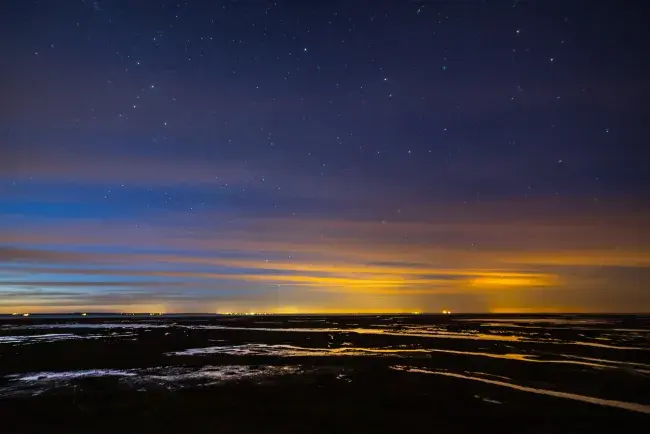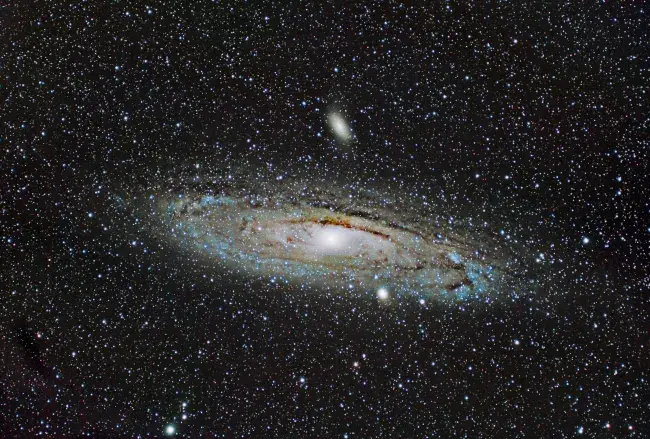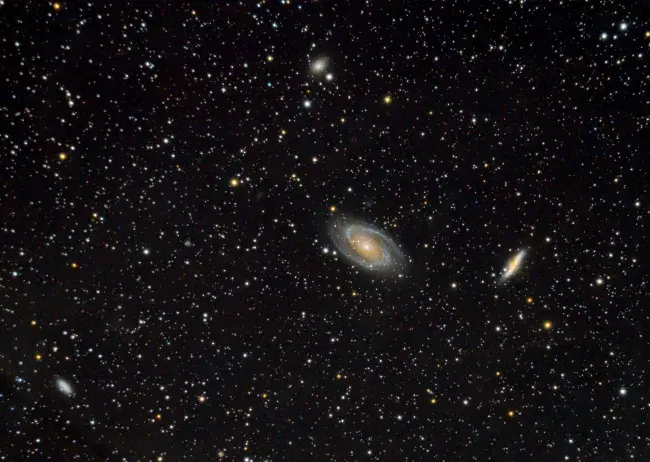Step into the awe-inspiring world of stargazing with our ultimate guide.
In this article, we'll explore the beauty of the night sky and invite you to join us on a celestial adventure. From ancient myths and legends to the latest astronomical discoveries, we'll take you through the wonders of the cosmos and show you how to find your way among the stars.
With our practical tips and easy tricks, you'll learn how to spot constellations, recognize planets, and experience unforgettable events like meteor showers and eclipses. Whether you're a seasoned astronomer or just getting started, this guide will deepen your appreciation for the incredible universe above.
Leave the city lights behind and embrace the peacefulness of a truly dark night. Discover how the absence of artificial light reveals breathtaking views of the stars. We'll also highlight some of the best stargazing spots around the world, where the night sky comes alive in all its glory.
Let your inner stargazer shine and get ready to experience the hidden wonders of the dark sky!
Why Dark Skies Matter for Stargazing
Stargazing gives us a glimpse into the vastness of the universe, but to truly see the stars, a dark sky is essential. Light pollution from artificial lights can wash out the beauty of the night sky. Here, we'll explore why dark skies matter and why it's worth finding a spot away from city lights.
Light pollution doesn’t just affect our view of the stars – it also harms wildlife, disrupts ecosystems, and can impact human health. By learning about light pollution, we can take small steps to protect our dark skies for future generations.
Understanding Light Pollution
Light pollution happens when artificial light brightens the night sky, hiding stars and celestial objects from view. In this section, we'll explain what causes light pollution, why it matters, and how it affects stargazing.
Major sources include city lights, streetlights, and poorly designed outdoor lighting. This glow not only hides stars but also disrupts natural rhythms. Find out more here: Learn more about light pollution.
Top Stargazing Locations
To see the night sky in all its beauty, you need to find places with little to no light pollution. Here, we'll guide you to some of the best stargazing destinations around the world.
One highlight is the Dark Sky Park of Møn & Nyord, known for its incredibly dark skies and official certification from the International Dark Sky Association. Learn more about how dark it is on Møn and read about the history of the Dark Sky Park.
Essential Stargazing Gear
You don't need much to start stargazing, but a few tools can make the experience even better. In this section, we'll talk about helpful gear like telescopes, binoculars, star charts, and smartphone apps.
A good telescope opens up a whole new world. We'll help you choose the right one for you and show you why binoculars can also be an amazing tool for exploring the stars.
Find out more here: Tools for observing the night sky.
Tips for Beginner Stargazers
New to stargazing? We’ve got you covered! Here, you'll find simple tips to help you start exploring the night sky with confidence.
A great first step is learning to recognize constellations. We'll introduce you to some of the most famous ones and show you easy ways to spot them. Plus, we’ll explain how to tell different types of stars apart by their brightness, color, and position.
Popular Celestial Sights
The sky is full of amazing things to see – from bright stars and glowing planets to faraway galaxies and colorful nebulae. Here, we'll highlight some of the most exciting objects to look for.
The Moon is always a favorite. We'll show you the best times to see its craters and mountains, and help you recognize the planets in our solar system. Learn more about the Moon. Discover the planets.
Must-See Astronomical Events
Throughout the year, there are plenty of breathtaking astronomical events to enjoy. We'll highlight the best meteor showers, eclipses, and planetary alignments – plus tips on how to catch them.
Meteor showers are one of the biggest highlights. We’ll share the best times and places to see them, explain how they happen, and also talk about eclipses and how to watch them safely. Learn more about meteor showers.
Stargazing Photography Tips
Want to capture the beauty of the night sky? Here, we'll give you easy-to-follow tips for taking amazing star photos.
We’ll help you choose the right camera and settings, find the perfect spot, and show you how to bring out the best details in your photos when editing. Learn more about night sky photography.
Conclusion: Embrace the Magic Above
The night sky is full of mysteries just waiting to be discovered. By reconnecting with the stars, we open a door to wonder, imagination, and a deeper understanding of the universe.
Whether you're a lifelong stargazer or just starting out, there's always something magical to find. Grab your binoculars or telescope, head to a dark place, and let the stars amaze you.
Happy stargazing!




